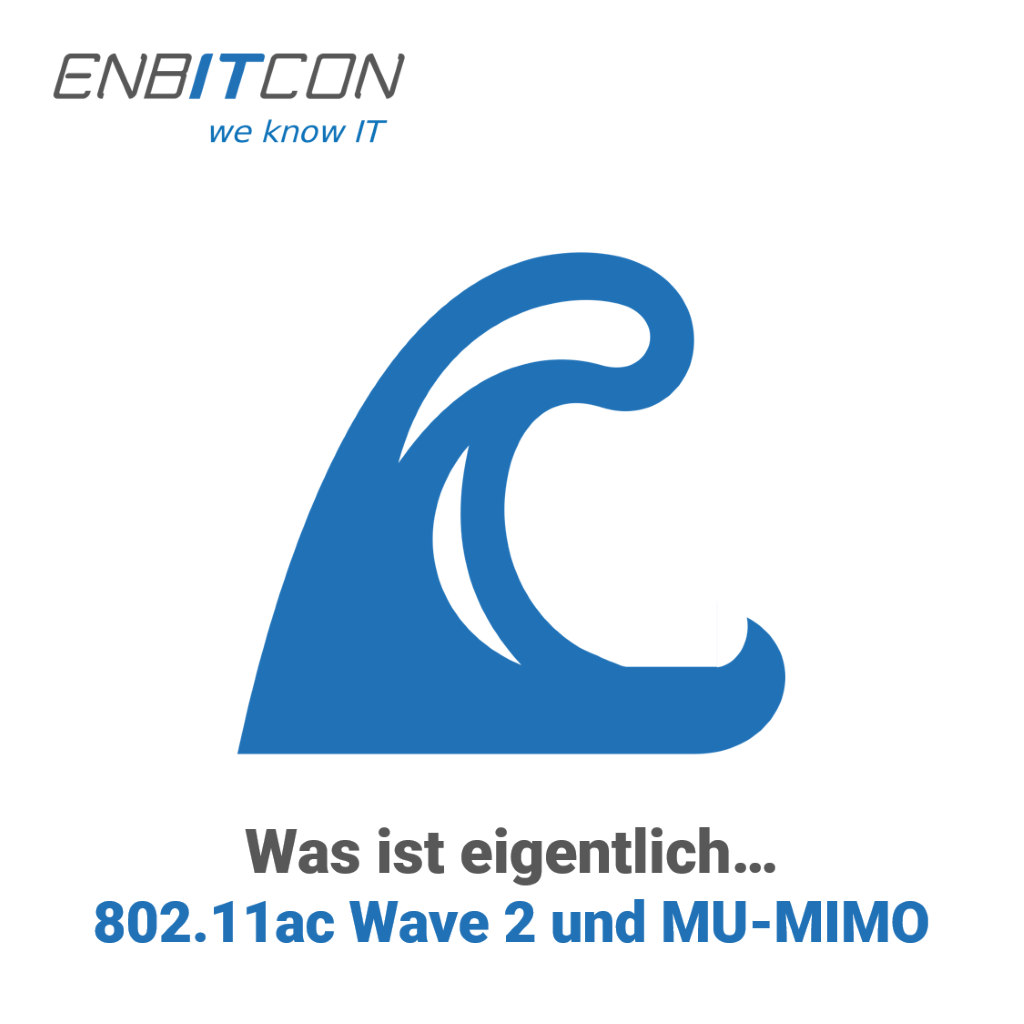
What is actually... 802.11ac Wave 2 and MU-MIMO?
On our own behalf
What is 802.11ac Wave 2?
In 2013, 802.11ac was adopted as the WLAN standard by the Wi-Fi Alliance. In 2016, a revised version was published with 802.11ac Wave 2. The main differences compared to 802.11ac include wider transmission channels in the 5 GHz band: instead of 80Hz, the frequency band can transmit up to 160MHz. This is particularly optimal in environments where few WLAN networks are active. In addition, Wave 2 can transmit up to four streams simultaneously - with 802.11ac only three were possible.
What is MU-MIMO?
One of the biggest problems with 802.11ac, however, is not speed but efficiency in the distribution of data. Although 802.11ac can send up to three data streams simultaneously, it can only send them to one device. If an end device can only process one data stream, two streams remain unused. A lot of wasted potential - the Wi-Fi Alliance also found this.
802.11ac Wave 2 introduces Multi-User MIMO (MU-MIMO). This technology makes it possible to split the data streams and thus supply several devices simultaneously.
MU-MIMO can be explained, for example, with a post office branch: four customers are standing at the counter waiting for their parcels. However, the branch employee can only carry three parcels and thus only give the customer a maximum of three parcels. With MU-MIMO, however, the employee is able to carry four parcels and distribute them to all four customers at the same time. Waiting times become shorter and more customers can be served in the same amount of time.
What is beamforming?
Beamforming is another innovation. Behind this futuristic name is the possibility of changing the direction of the signal, for example, to send it more specifically in the direction of the end device. This improves both signal strength and signal quality at the end device. But also the range of the signal can be increased and possible interferences can be better compensated.
What do I have to bear in mind when switching to 802.11ac Wave 2?
Anyone planning to upgrade their current WLAN network to 802.11ac Wave 2 will, however, face a few problems. For example, it may be necessary to lay an additional network cable in order to be able to supply the access point with data sufficiently quickly via link aggregation to be able to transmit 2.5 Gbps or more. Power requirements have also increased: While simple Power-over-Ethernet (PoE) with up to 15 watts is sufficient for many 802.11ac access points to adequately supply the AP, 802.11ac Wave 2 access points usually require PoE+, which can provide up to 30 watts. This may mean the purchase of a new PoE switch or new PoE injectors.

Marcel Zimmer is the Technical Managing Director of EnBITCon. During his time in the German Armed Forces, the trained IT developer was able to gain numerous project experiences. His interest in IT security was significantly awakened by his service in command support. Even after his service, he is an active reservist in the Bundeswehr.
His first firewall was a Sophos UTM 120, which he had to set up for a customer project. Since then, his interest in IT security has grown steadily. In the course of time, various security and infrastructure topics have come into his focus. His most interesting projects included, for example, WLAN coverage in an explosion-proof area, as well as a multi-site WLAN solution for a large